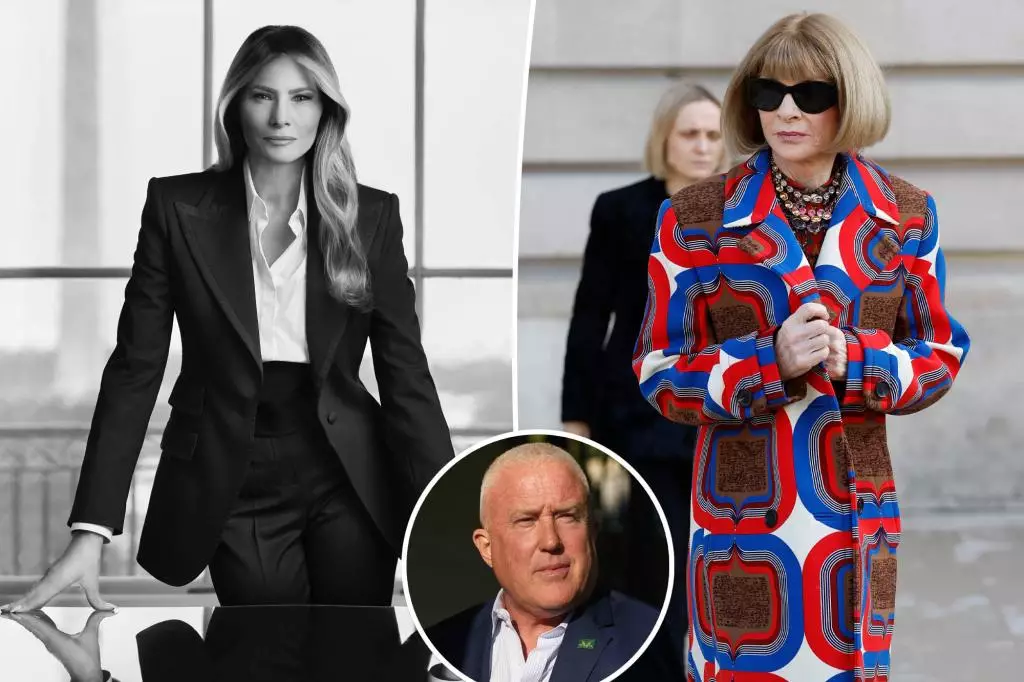In the landscape of American politics, few personas have sparked as much debate and discussion as Melania Trump, the former First Lady. As the first lady of Donald Trump, she not only bore the weighty title but also became a subject of critique, particularly in the realm of fashion. A recent op-ed published by Vogue, under the editorial lens of Anna Wintour, unleashed a wave of discontent among Melania’s supporters, prompting a medley of responses and rebukes that media consumers couldn’t ignore. With a significant profile and platform, Vogue is often viewed as the apex of fashion journalism. Thus, any judgment rendered by the magazine carries weight, and in this case, it appears that Melania’s supporters were ready to strike back.
Bill White, a notable advocate for Melania Trump and Donald Trump’s proposed appointee for the Ambassador to Belgium, did not hold back regarding Vogue’s critique. He expressed a fierce loyalty towards Melania, urging her supporters to ‘cancel’ their subscriptions to what he mockingly dubbed ‘Condé Nasty.’ This sentiment captures a larger trend in contemporary cultural discussions where public figures find themselves under scrutiny, and their supporters rally to defend them in a display of unity and purpose. White described Melania as an embodiment of elegance, eloquence, and familial devotion, countering Vogue’s portrayal by asserting her merits both as a mother and a partner to Donald Trump.
The Vogue article did more than simply assess a photograph; it sought to question Melania’s role as First Lady, implying a lack of authenticity in her public persona. The editorial posited that rather than commanding the presence expected of a First Lady, Melania appeared more suited for a television cameo than for the White House. Headlines like “freelance magician” punctuated their critique, serving as a stark reminder of how the fashion world intermingles with political life and narrative.
In the wake of these critiques, Melania Trump herself conveyed a dismissive attitude towards the idea of appearing on the cover of Vogue. During an interview, she emphasized her priorities, stating that her role as First Lady reaches far beyond the glossy pages of fashion magazines. Her assertions indicate a deliberate distancing from an industry that she perceives as less significant than her immediate responsibilities. The decision to remain uninvolved in fashion’s often superficial glimmer suggests a deeper understanding of her duties and a rejection of media-centric validation.
Moreover, her sentiments were echoed by loyalists who argued that Melania had been unfairly sidelined within the fashion community, claiming that many designers refuse to dress her. This ongoing tension underscores the underlying conflict between personal identity and public perception, illustrating how Melania’s fashion choices have been inextricably linked to her position within the political realm.
The ongoing discourse surrounding Melania Trump reflects broader issues of media bias and the scrutiny placed on women in public life. The harshness of the critiques she faces reveals how the media can often serve as a battleground for cultural values rather than simply a platform for journalism. Supporters’ reactions highlight an important dialogue regarding the intersection of politics and media perception, revealing the scope of criticism that often faces women in powerful roles.
Additionally, Wintour’s silence amid the storm illustrates a fascinating aspect of media leaders’ responsibility within political narratives. Their decisions can greatly influence public perception, eliciting responses that resonate far beyond the realm of fashion. As allies of Melania Trump wrestle with these portrayals, they also illuminate broader societal trends, evoking discussions around women’s representation and the often rigorous standards to which they are held.
The friction between Melania Trump and Vogue serves as a captivating case study examining the tension between contemporary fashion and political life. Supporters rally in defense of Melania, viewing her as a symbol of resilience against an often unforgiving media narrative, while Vogue’s sharp critique emphasizes the magazine’s role in shaping societal standards and expectations. The ensuing conversations challenge readers to think critically about how public personas are crafted and the implications of media representation in the ever-evolving domain of American politics.

Leave a Reply